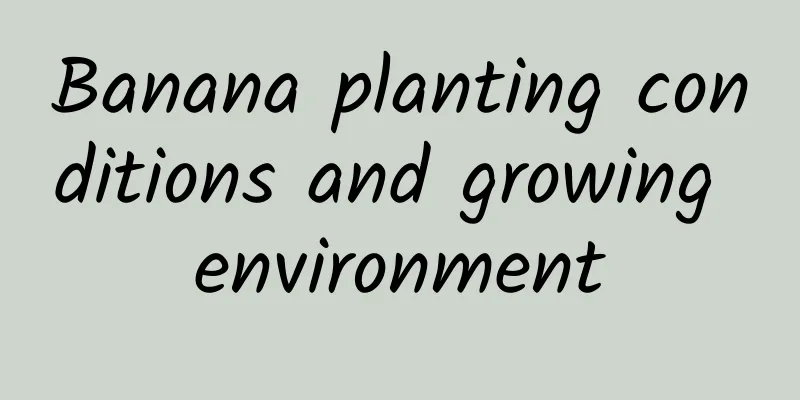How to grow peanuts?

|
Peanuts , a nut rich in nutrients, are not only a delicacy in our daily life, but also an important source of many cooking oils and foods. How to grow peanuts scientifically and effectively to improve yield and quality has always been the focus of everyone's attention. Let's talk about how to grow peanuts. 1. Site selection and land preparation Peanuts prefer warm, moist, well-drained soil conditions. Therefore, when choosing a planting site, priority should be given to plots with flat terrain, deep soil, loose and breathable soil. During the land preparation process, pay attention to removing weeds, stones and other debris to ensure that the soil is loose and conducive to the growth of peanut roots. 2. Fertilization management Reasonable fertilization is the key to increasing peanut yield. Before planting, a scientific fertilization plan should be formulated based on soil fertility and the growth needs of peanuts. Generally speaking, base fertilizer should be mainly organic fertilizer , supplemented by chemical fertilizer to ensure sufficient soil nutrients. During the growth period, nitrogen fertilizer, phosphorus fertilizer and potassium fertilizer should be applied in a timely manner to meet the needs of peanuts at different growth stages. 3. Seeding Technology Sowing is an important part of peanut planting . Before sowing, choose suitable seeds and soak and germinate them to improve their germination rate and disease resistance. When sowing, pay attention to controlling the sowing depth, which is generally 2-3 times the diameter of the seed. At the same time, maintain a reasonable distribution of row spacing and plant spacing, which is conducive to ventilation and light transmission of the peanut plants. 4. Field Management Field management is an important guarantee for high peanut yield. During the growing period, it is necessary to carry out tillage, weeding, soil cultivation and other operations in a timely manner to keep the soil loose and moist, which is conducive to the growth of peanut roots and the absorption of nutrients. At the same time, we must pay close attention to weather changes and take timely measures such as drought resistance and flood prevention to ensure the normal growth of peanuts. 5. Pest and disease control Pest and disease control is an important part of peanut planting process that cannot be ignored. During the growing period, fields should be inspected regularly to detect and deal with pests and diseases in a timely manner. For common peanut diseases, such as leaf spot and rust, you can take measures such as spraying pesticides and adjusting planting density to prevent and control them. For insect pests, such as aphids and white grubs , biological control, chemical control and other methods can be used to control them. 6. Harvest at the right time Timely harvesting is the key to ensuring high peanut yields. Generally speaking, the best time to harvest peanuts is when the fruits are full and the pods turn from green to yellow. During the harvesting process, care must be taken to avoid damaging the peanut plants and fruits to ensure the integrity and quality of the fruits. At the same time, peanuts should be dried and stored in time to prevent problems such as moisture and mildew. To sum up, in order to achieve high peanut yields, it is necessary to start from site selection and preparation, fertilization management, sowing technology, field management, pest and disease control and timely harvesting, and comprehensively improve the level of planting technology.
|
<<: What are the light requirements of cyclamen? Do they like water?
>>: How to repot cyclamen and what to pay attention to when repotting
Recommend
The dietary or medicinal value of turmeric
The dietary or medicinal value of turmeric Functi...
Ginkgo tree potted planting method
To pot a ginkgo tree, you should first choose a c...
How to care for Phalaenopsis after it blooms
1. Proper pruning After the flowers fade, proper ...
Cultivation methods and precautions of blue stone lotus
Blue stone lotus needs more light to grow The lea...
How to propagate Phoenix tail bamboo
1. How to breed When we take care of Phoenix bamb...
What to do if heather drops leaves
1. Unsuitable soil Heather generally prefers fert...
Does Tiger Piranha like water or drought?
Does Tiger Piranha prefer moisture or drought? Ti...
The efficacy and function of Fuchsia
1. Appreciation Because its shape is quite unique...
How to grow osmanthus potted plants
1. Choose a container To choose a suitable contai...
Cultivation methods and precautions of hairy azalea
1. Maintenance methods 1. Soil: Rhododendron is s...
Loofah planting and management techniques
During the loofah cultivation process, many farme...
What are the cultivation methods and precautions of kidney bean trees?
How to grow kidney bean trees The green bean tree...
How to turn tap water into weak acid for watering flowers (adjust alkaline water into acidic water for watering flowers)
The water used for watering flowers is alkaline, ...
How to propagate succulent jade plants and what to pay attention to
How to propagate succulent jade plants There are ...
What is the function of lucky bamboo and what are its characteristics
1. Function 1. Ornamental effect: It is an evergr...









